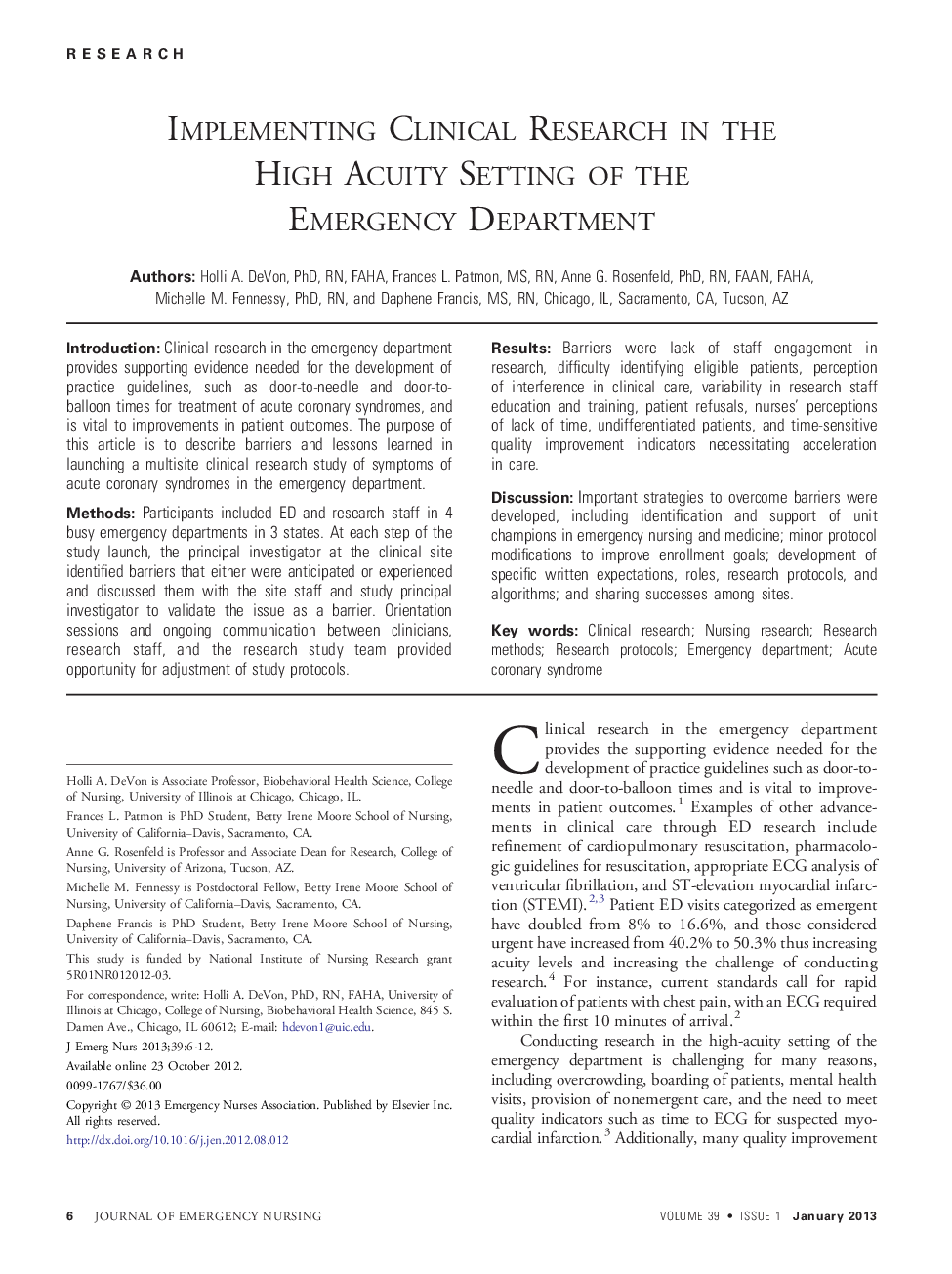| Article ID | Journal | Published Year | Pages | File Type |
|---|---|---|---|---|
| 2610363 | Journal of Emergency Nursing | 2013 | 7 Pages |
IntroductionClinical research in the emergency department provides supporting evidence needed for the development of practice guidelines, such as door-to-needle and door-to-balloon times for treatment of acute coronary syndromes, and is vital to improvements in patient outcomes. The purpose of this article is to describe barriers and lessons learned in launching a multisite clinical research study of symptoms of acute coronary syndromes in the emergency department.MethodsParticipants included ED and research staff in 4 busy emergency departments in 3 states. At each step of the study launch, the principal investigator at the clinical site identified barriers that either were anticipated or experienced and discussed them with the site staff and study principal investigator to validate the issue as a barrier. Orientation sessions and ongoing communication between clinicians, research staff, and the research study team provided opportunity for adjustment of study protocols.ResultsBarriers were lack of staff engagement in research, difficulty identifying eligible patients, perception of interference in clinical care, variability in research staff education and training, patient refusals, nurses’ perceptions of lack of time, undifferentiated patients, and time-sensitive quality improvement indicators necessitating acceleration in care.DiscussionImportant strategies to overcome barriers were developed, including identification and support of unit champions in emergency nursing and medicine; minor protocol modifications to improve enrollment goals; development of specific written expectations, roles, research protocols, and algorithms; and sharing successes among sites.
